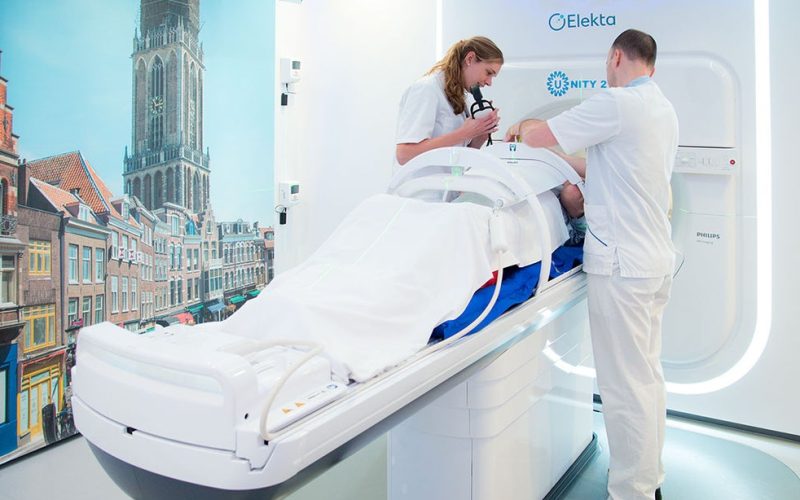Patients receiving treatment for prostate cancer often experience erectile dysfunction due to radiation therapy. The first interim results from the ERECT trial, conducted at UMC Utrecht, show that precision radiotherapy using the MR-Linac can spare the nerves and blood vessels around the prostate, increasing the chances of maintaining erectile function.
In the Netherlands, prostate cancer is diagnosed in approximately 13,000 patients each year. About 20 percent of these cases involve a intermediate risk tumor confined to the prostate. For this group, survival rates after surgery or external radiotherapy are very high. However, a common side effect of both treatments is that many patients have trouble achieving erections.
In the ERECT trial, prostate cancer patients are treated with so-called nerve- and vessel-sparing radiotherapy. This technique uses an MR-Linac, a device that captures MRI scans both before and during radiation treatment. This allows physicians to see the prostate and the structures important for erectile function with great precision.
“With the MR-Linac, we can accurately map the blood vessels and nerves involved in erectile function”, says physician-researcher Tariq Lalmahomed. “We aim to minimize radiation exposure to these structures while ensuring that the prostate receives the full therapeutic dose. We believe this gives patients a better chance of maintaining their erections.”
Tariq Lalmahomed
A total of 70 patients has been treated with the nerve- and vessel-sparing radiotherapy, and they will be followed for three years. At the start of the study, all patients were eligible for radiotherapy without hormone therapy and had good erectile function.
“The preliminary results show that patients treated with this new technique experience significantly fewer erectile problems than those treated on the MR-Linac without nerve- and vessel-sparing measures”, says Lalmahomed. Participants in the ERECT trial reported a much lower incidence of erectile dysfunction at 12 and 18 months after treatment.
A questionnaire among intermediate risk prostate cancer patients treated at UMC Utrecht showed that 85 percent were still sexually active before treatment. Of these, 50 percent reported moderate to good erectile function at baseline. Lalmahomed: “For patients who are sexually active before treatment, preserving erectile function can make a significant difference in their daily lives.”
These interim results suggest that precision radiotherapy may help improve quality of life after prostate cancer treatment. “However, we will only know whether this approach is truly effective once the full three-year follow-up period has been completed”, Lalmahomed explains. “Only then will we be able to determine whether the improvement in erectile function is sustained over the long term and what the oncological outcomes are.” If the technique proves effective in this patient group, it could potentially be offered to a wider population of prostate cancer patients in the future.
Lalmahomed T, Teunissen F, de Boer J, van Melick H, Verkooijen H, Meijer R, Wortel R, van der Voort van Zyp J: “The EREctile function preservation for prostate Cancer radiation Therapy (ERECT) trial (NCT04861194): preliminary results up to 18 months.” Radiotherapy and Oncology. 2025; 206(1), 1924-1925.
Movember is a global movement that raises awareness for the health of men and people affected by prostate cancer, testicular cancer, or mental health challenges. Each November, many choose to grow a mustache to spark conversations and support prevention and research. The campaign aims to help everyone impacted by these issues live longer and healthier lives.

